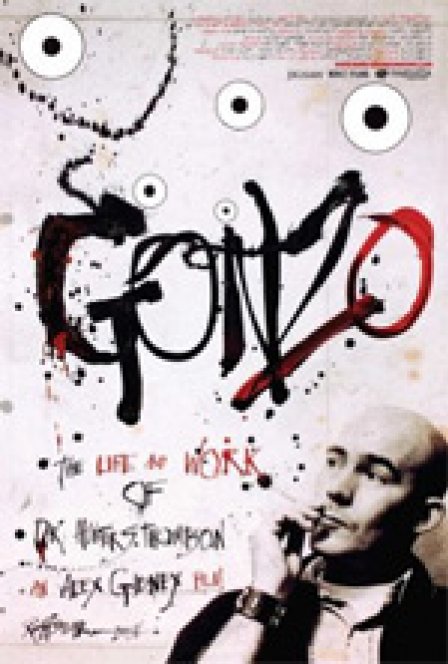Gonzo begins ominously, with an actor portraying fallen journalist Hunter S. Thompson, hands on a gun, as the world outside his window unfolds like the film strips and slides from an Electric Kool-Aid Acid test, replete with unfeeling psychedelic jams. This is not the world of Hunter S. Thompson -- at least not the world we were supposed to see. That world -- the one with the good Doctor running for Sheriff, the intrepid political reporter trumping up McGovern and drumming down Nixon, the man obsessed with finding the beginning and ending of the American Dream -- is to be unraveled within the two-hour odyssey known as Gonzo, and all it costs is surviving a green screen on mescaline.
The film is equal parts tribute, obituary, biography, and exposé. No one pretends Hunter was an upstanding citizen, but no one denies the mythology associated with his unrivaled output either. Gonzo overflows with the firsthand knowledge of those who endured Hunter in his glory days; even one-time foe Pat Buchanan props up his legacy with the bitterness of a Nixon witch hunt long past. But it’s the candid remembrances from family, friends, and politicians (McGovern and Jimmy Carter are also featured throughout Gonzo) that transcend the myth of Hunter, providing admirers a glimpse into the real man of whom they’ve long been intrigued.
Acid-inspired visuals aside, director Alex Gibney does his best to deliver Hunter S. Thompson-the-man to the viewing audience. Rarely does he forgo delving into Hunter's darker moments in fear of alienating the blind followers. Hunter's two wives and son, Juan, offer tales that paint him as both a family man and a reckless, paranoid, and self-defeating individual. These stark takes are not a shock to many, but to be aired with such little caution delivers the edge few biographical documentaries dare to uncover for fear of tarnishing the myth. Gibney’s refusal to sidestep the troubled times only adds depth to Hunter’s character.
There are moments when Gibney loses focus (much like his subject), causing Gonzo to become more political statement than life study. When dealing with Hunter’s work during the 1972 primary and presidential campaigns, Gibney gives in to the obvious parallels between politicking of 30 years ago and the modern era. Not much has changed, and it’s a good comparison to make, but it overtakes the biographical world of Hunter. However, Gibney’s biggest faux pas is rushing through the latter years of Hunter’s life. Through the words of his second wife and old pal Jimmy Buffet, we are given glimpses into his slowed pace and fight against writer’s block, but the leisurely pace afforded to his career is tossed aside to wrap up Gonzo with footage from the party that saw Hunter’s ashes shot from a canon.
If you’ve never read a lick of print from the hands of Hunter S. Thompson, Gonzo is the perfect introduction to his vitriolic wit and larger-than-life persona. Longtime admirers, however, may feel a bit cheated after completing Gibney’s visual tribute to Dr. Gonzo. The recreations, the green screens, and the socio-political tangents cut into time that could have focused on Hunter’s youth and death. But Gonzo’s unevenness and off-the-wall style is more than a fitting tribute to the memory of Hunter S. Thompson, mirroring the take-no-prisoners panache of one of the literary world’s greatest voices.

